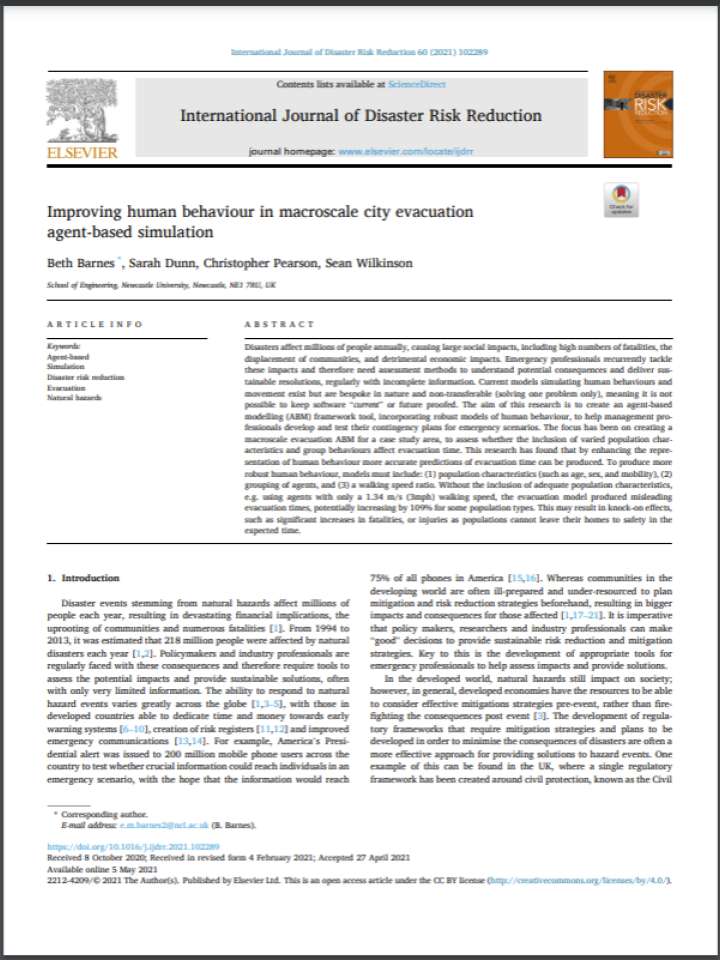Improving human behaviour in macroscale city evacuation agent-based simulation
The aim of this research is to create an agent-based modelling (ABM) framework tool, incorporating robust models of human behaviour, to help management professionals develop and test their contingency plans for emergency scenarios. The focus has been on creating a macroscale evacuation ABM for a case study area, to assess whether the inclusion of varied population characteristics and group behaviours affect evacuation time. Disasters affect millions of people annually, causing large social impacts, including high numbers of fatalities, the displacement of communities, and detrimental economic impacts.
Emergency professionals recurrently tackle these impacts and therefore need assessment methods to understand potential consequences and deliver sustainable resolutions, regularly with incomplete information. Current models simulating human behaviours and movement exist but are bespoke in nature and non-transferable (solving one problem only), meaning it is not possible to keep software “current” or future proofed.
This research has found that by enhancing the representation of human behaviour more accurate predictions of evacuation time can be produced. To produce more robust human behaviour, models must include:
- population characteristics (such as age, sex, and mobility),
- grouping of agents, and
- a walking speed ratio.
Without the inclusion of adequate population characteristics, e.g. using agents with only a 1.34 m/s (3mph) walking speed, the evacuation model produced misleading evacuation times, potentially increasing by 109% for some population types. This may result in knock-on effects, such as significant increases in fatalities, or injuries as populations cannot leave their homes to safety in the expected time.
Explore further
